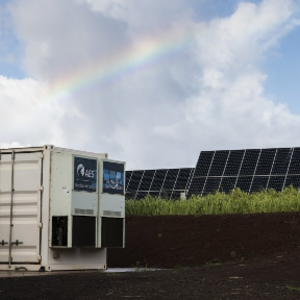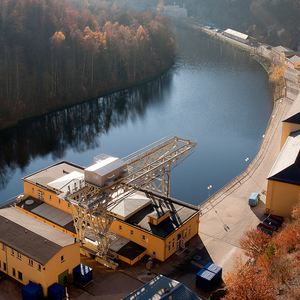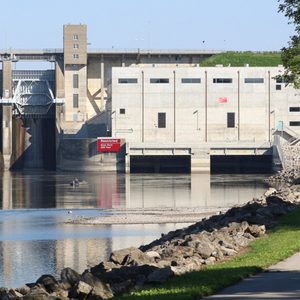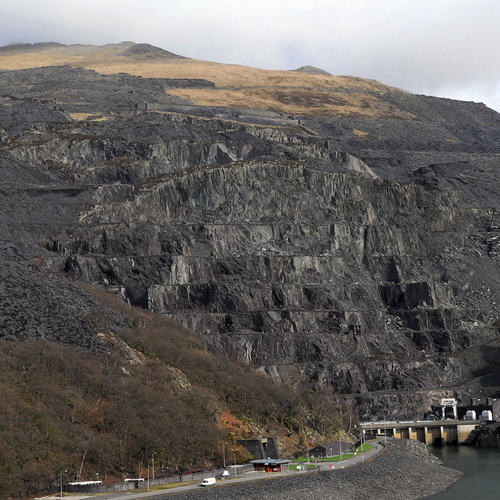Last weekend, looking for someplace new to explore, my wife and I drove down to Northfield, Massachusetts, to check out the cross-country ski center. The skiing was great, and it occurred to me that readers of this column might be interested in learning about the pumped-hydro power plant on the mountain—the ski center was created as a recreational amenity for this power project.
When the Northfield Mountain pumped-hydro power station was built in 1972, it was the largest facility of its type in the world. To understand why the plant is so significant, it helps to understand one of the problems with an electrical power grid: storage.
Electricity is generated by power plants, and the electric current (made up of electrons) flows through a massive current loop—our electrical grid. We tap into this grid to operate our lights and appliances, to heat our houses, and (someday) even to charge our plug-in hybrid cars.
The problem is that electricity is very hard to store. It takes a long time to start up and shut down power plants, so utility companies have to keep those plants operating even when there’s more power being produced than is being used—thus wasting a lot of electricity. This is where pumped storage comes in.
At pumped-hydro facilities around the world, excess electricity is harnessed during off-peak periods (when utility companies are producing more electricity than their customers need) to pump water uphill. At Northfield Mountain, water is pumped from the Connecticut River through a 1,100-foot-long underground shaft to an artificial reservoir located 800 feet above the river. Then, during periods when the utility company needs extra electricity to meet peak demand (or during emergency conditions when other power plants are shut down), water is allowed to flow back down through the same shaft, and that water spins turbines to generate the electricity.
The Northfield Mountain upper reservoir covers 300 acres and holds 5.6 billion gallons of water. Deep underground there are four reversible turbines. Each of these can pump 20,000 gallons of water per second to the upper reservoir and then generate 270,000 kilowatts of electricity from the return flow, so the total output for the four turbines is 1,080 MW—enough to serve peak-power requirements of 1.7 million customers.
With pumped-hydro storage there are some losses from the pumping (and from evaporation of water from the upper reservoir), but a remarkable 70-85% of the electrical energy used to pump the water uphill is typically recovered when the water flows back down.
Pumped-hydro is by far the most economical method of storing large amounts of electrical energy—far less expensive than batteries.
Another energy storage option, which is still experimental, would use compressed air in an underground cavern in a similar fashion. With this approach, off-peak electricity would be used to power large blowers, forcing air into well-sealed underground caverns or abandoned mines. Then when peak power is needed, this air would be allowed to blow back out through a wind turbine. To date, there are no utility-scale compressed-air power storage systems, though research is being done on this technology.
Because pumped-hydro makes so much sense for utility companies, quite a few systems have been built over the past several decades. Northfield Mountain only maintained its honor as the world’s largest such facility for about a year. The largest today, in Virginia, is nearly twice as big, with a capacity of 2,100 MW. Still, our nearby system accounts for about 5% of the nation’s total pumped-hydro capacity. If there were more places to build this type of plant and if they were easy to build, there would probably be a lot more.
So if you feel like some cross-country skiing or a nice hike sometime, head down to Northfield Mountain (on Route 63 a few miles north of Route 2), and enjoy a workout. Various trails climb the 800-foot rise to the upper reservoir, offering a nice view of this body of water—and plenty of exercise. It took us about an hour to ski to the top via the Reservoir Road trail, and I was told that the record for skiing back down is eight minutes! Unfortunately, you won’t be able to see the turbines or much else with the system, because most of it is deep underground. But I find it fascinating to think about the massive infrastructure that’s pumping millions of gallons of water up and down the mountain on a daily basis—a process that helps keep our electricity affordable and provides emergency back-up in the event of power plant failures.
Weekly Newsletter
Get building science and energy efficiency advice, plus special offers, in your inbox.















One Comment
Just what I wanted to know
Great article. Very interesting, well-put, and cool research
Log in or create an account to post a comment.
Sign up Log in